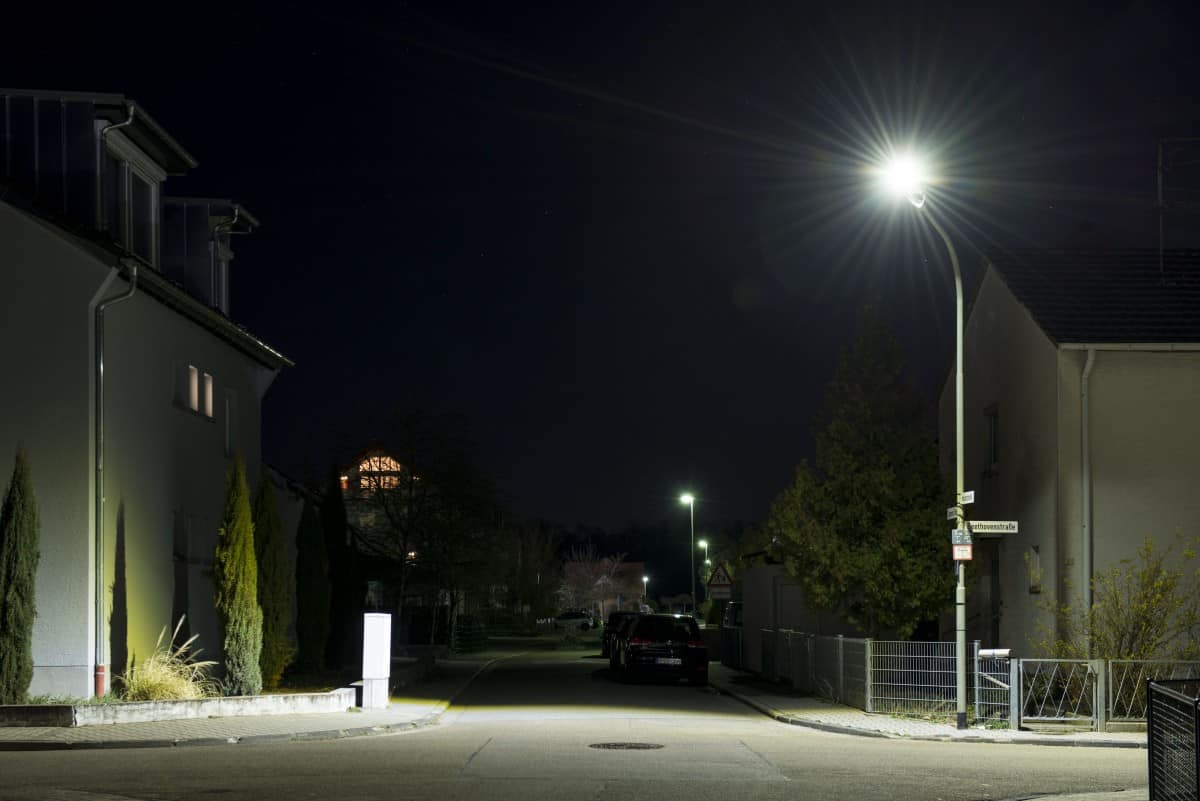
Munich is one of the cities which, as part of the EU project Smarter Together running from 2016 until 2021, has already installed some intelligent lamp posts, equipped with energy saving LED-lights. Research aiming to increase energy saving in street lighting on a long-term basis is running at full speed and scientists at the Karlsruhe Institute of Technology (KIT) have now developed a new, even more economical LED street light.
The scientists have managed to reduce the current consumption by another 20 percent, by using a special arrangement of weaker LEDs, instead of conventional high-performance diodes. This not only reduces the CO2 emissions, but also saves municipalities millions on electricity costs. The first practical test of the new LEDs is already underway in the municipality of Maxdorf, in the Rhineland-Palatinate area, where the Pfalzwerke Netz AG has equipped street lamps with new light heads for the first time.
“We have succeeded in significantly increasing the efficiency factor and lifespan of the lamps compared to conventional LED lights”, says Michael Heidinger of the Lighting Technology Institute (LTI) at the KIT. From his pen stems a circuit that intercepts the aging and failure of individual light-emitting diodes. It would be complicated to switch a large number of LEDs in parallel, since the failure of a single diode would lead to a failure of the entire system or subarea, explains Heidinger. A problem that many may know from own experience. If one small lamp breaks among the fairy lights on the Christmas tree, the entire remaining lights on the chain go out as well.
To circumvent this problem, you could switch the LEDs in series. But this would also come with disadvantages, as higher voltages would be needed with an increasing number of diodes. So far, only 40 LEDs can be installed in a connected series, as the voltage categorized as non-life-threatening lies at 120 volts. Now it is possible to mount up to 48 light modules on one circuit board. Since Heidingers new switching concept allows to work with a voltage of 20 volts, where otherwise 120 volts would be necessary. This does not only save costs, but the lights are also safer to handle.

ADVANTAGEOUS IN POWER CONSUMPTION AND COST
For all of the named reasons, especially the cost savings, numerous cities and municipalities are already in the process of switching from conventional power-guzzling street lamps to LED technology. According to the municipal utility companies, the street lighting of a middle-sized city with around 320,000 inhabitants, such as Karlsruhe, comprises of more than 55,000 lamps, of which about 35 percent are LEDs. The consumption of electricity in 2018 was about 10,800 megawatt hours. The annual electricity and maintenance costs lie at about three million euros. “With a complete conversion to the novel LEDs, financial savings of another 30 percent would be possible”, says Stefan Lang, who is responsible for technology and innovation at the Pfalzwerke.
In addition to the positive characteristics in relation to the energy consumption, the new lamps are also cheaper in acquisition, as low-power LEDs cost less than high-performance LEDs. This way, the production of the new system will be cheaper despite the higher number of lights.
Another advantage is that the lights are more pleasing to the eye, according to Klaus Müller, CEO of Gratz Luminance GmbH, who manufactures the new exterior lighting in Weinsberg, in the region of Baden-Württemberg. “Many small LEDs are perceived as surface-emitting-diodes from the distance. As a result, they are less glaring than high-performance LEDs, which are perceived as a point source of light”, he says. The transition to the new lamp technology is straightforward and thus inexpensive: “Our lamp head can easily be mounted onto existing lamp masts.”
In Maxdorf, the lights are currently being tested in a field test. Preparations for a series of production are already underway, as other municipalities have also expressed interest in the technology. “We hope to be able to offer the lights to selected pilot clients in the second half of 2019”, says Müller.

